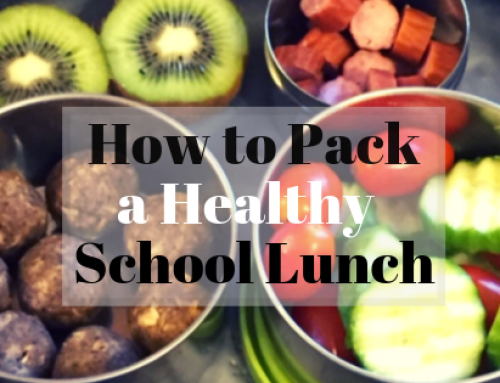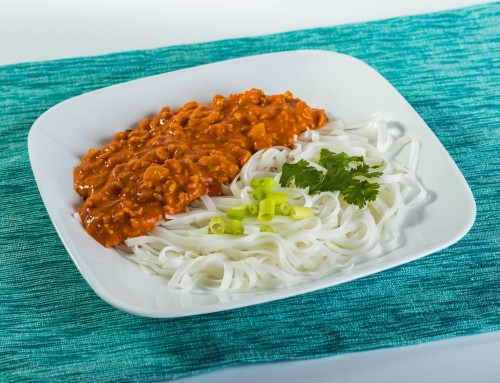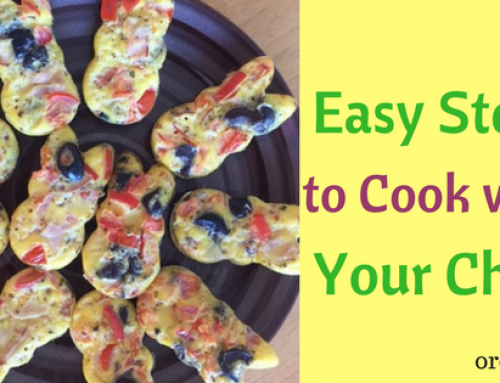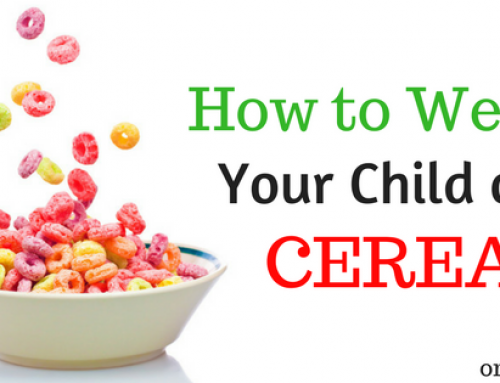My daughter started kindergarten and my son started grade 3 this year. It’s a bitter sweet time. While I wish summer would last forever so we can do fun things (almost) all the time, I think it’s important for them to go back to school to learn new things, connect with their friends and make new ones. It’s also important for me to dedicate more time to my endeavors that are usually pushed to the side when summer starts.
Do you know what else started besides school? Happy (or agonizing – depending on how many days of school have passed) mornings of preparing tasty and (we hope) healthy lunches that our children will mostly … eat. Or will they?
Since 4 years ago when my son started preschool, I have learned to adjust the amount of food I pack in his lunch bag according to his age and the time he spent away from home. It’s a process with quite a bit of trial and error, especially since he continuously grows and his dietary needs increase from year to year.
Now I try to pack the right amount of food so he doesn’t end up eating the leftover food for an after school snack. Or so I don’t have to throw away the food that went off after a long day spent in a warm backpack (I am looking at you strawberries and raspberries!).
I would like to share with you a few tips and tricks that I used (and I still use) to entice my children to happily eat their lunch at school and bring home an empty lunch bag to avoid food waste. Sometimes it’s difficult to “convince” children to eat their packed lunch, but this process becomes a lot easier with a bit of planning and organization.
- Talk to your child. Sit down with your child during the weekend and decide together what foods should go in their lunch bag (I like to call this “lunch bag planning”). Ask your child what they would like to see in their lunch. Better yet, ask them to pack their own lunch while you teach and help them do it. Give your child a few pointers on what their lunch bag should include (a fruit, a vegetable, a protein, and a healthy fat) and ask them to choose (even pack if they are old enough) what they want to eat the next day at school. Requests for cookies, pretzels, crackers, candy, etc. are bound to happen so be ready to teach your child what a healthy lunch bag should include.
- Meal plan. If you plan your dinners you can also plan for leftovers to include in your child’s lunch bag. I encourage you to meal plan as it saves you money, time and unwanted stress. Here’s more reasons why you need to meal plan.
- And to continue the idea above, leftovers are great. There is nothing wrong with leftovers. Did your child love the last night’s supper? Grab a thermos, warm up the food, and pack it in their lunch bag. Bonus points if you do this right after supper to save time in the morning. Did you know that you can preheat your thermos to keep the food warm longer? Pour some boiling water in the thermos and leave it inside for a few minutes, then dump the water and put the hot lunch food.
- As I said above, pack the lunch bag the night before. If you do this, you’ll have one less annoying thing to do in the morning. I don’t do this every night, but I do it quite often and I then put the lunch bags in the fridge overnight. If I don’t pack it the night before, I write down a short list of foods I need to pack the next day and leave it on the kitchen counter next to their lunch bags. Or put the thermos on the stove next to a pot full of water. The next morning I feel less stress over what I need to pack as I already decided the night before.
- Use attractive containers. In terms of containers, I kept it very simple since my son started preschool. I bought a few spill-proof containers and other small metal containers. I got the lunch bags from the closest health food store or from Superstore (my son went through a few lunch bags through the years). In terms of water bottles, I bought a few non-leaky stainless steel bottles when they were on sale and we have been using these over the years. Last year, my son was in 2nd grade and I got him a bigger non-leaky stainless steel water bottle. I prefer bottles made of stainless steel because I try as much as I can to lower my kids’ exposure to plastic.
- Easy foods. Pack easy foods as children don’t have much time to eat their lunch. They also want to talk to their friends while they eat, which shortens the actual amount of time they have for lunch. Peel or have your child peel oranges, mandarins, boiled eggs etc. the night before, to save time during lunch time.
- Pack the food in easy to open containers. This doesn’t only ensure that precious minutes are not wasted, but also prevents your child from not being able to open the containers, maybe being too shy or embarrassed to ask the lunch supervisors for help and possibly going hungry for the rest of the day. I never got my kids a lunch box with a few compartments, as I always felt like their various compartments were “pressuring” me to fill them all every morning. So I stuck with individual metal containers to be able to choose every day if my children would get 2, 3 or 4 different food choices in their lunches.
- Keep it simple. It’s okay if the lunch you packed is not Pinterest worthy (mine is neither). A piece of fruit, a vegetable and a sandwich are perfectly fine, especially if you know that this is something your child will eat. If your child is a picky eater and enjoys simple foods, you might find this list useful.
- Don’t experiment. In my opinion, lunch time at school is not the right time to try a new recipe. Pack foods your child likes or at least they are familiar with. I usually experiment with new foods at dinner time during the week or on weekends.
- Make the food look fun as much as you can. I am not for spending a lot of time figuring out how to make my children’s food look fun, but I am for spending a little bit of time figuring out things that work better. I don’t make elaborate school lunches, but many moms enjoy making them. If you are the mom who makes beautiful lunches, please keep it up and post them on Pinterest as I am there quite often looking for inspiration. Even more, share a Pin with us in the comments below so we all check it out. Here’s an example. For (almost) 8 years my son loved cucumbers. For the last few months he kept saying that he doesn’t like them. So I bought different varieties, to no avail. He still refused them. Until one day when I decided to give him cucumbers sliced in a fun way (I used this tool which I usually use to cut potatoes for French fries) with hummus (BTW, he loves hummus). Guess who ate cucumbers? My son! I am not saying that this will work next time I offer him cucumbers because we all know that kids can like one food today and completely reject it tomorrow. What I am saying is that I scrambled my brain for a few minutes, used a tool and a dip I already had in my kitchen and something fun enough for him to eat came out as a result.
- If your child is old enough to understand (and care), talk to them about how important it is to eat healthy meals to nourish their growing body. Healthy food helps them do better in school, focus and remember what they learn, do better in sports, and stay full of energy and joy. While junk food will make them depressed, forgetful and sluggish.
If you are curious, here’s what I packed for my son’s school lunches 2 years ago for the first week of grade 1 – the post also includes a funny conversation between me and my son.
There are photos of his lunch bag in the morning and his lunch bag in the afternoon. You can see what I packed for him in the morning and what he brought home (if anything) after school.
And this what I packed for the second week of grade 1 – with another funny conversation between me and my son.
And here are this years’ first 4 school lunches I packed for my son (my daughter gets 2 options instead of 4):
Strawberries, cucumber, boiled egg and gluten-free and dairy-free fudgy chocolate cherry banana cake
Carrots, grapes, landjaeger sausage and cake (the same as above)
Carrots, oatmeal bites, Romanian sausages (we call them “mici” which means “little ones”) with mustard
Grapes, celery, hummus, seaweed, and a sandwich (this one spinach; other times the sandwich has lettuce or baby kale)
How much food should you pack? The answer depends on your child. Some children can live on an a few apple slices and a sandwich the entire day at school and others need more food. Their appetite also depends on their age. A 6 year old will eat less food than a 12 year old.
My 8-year old boy can eat quite a bit when he is at home for lunch, but he eats less at school as he has a short lunch break and is distracted by talking to his friends. So I learned to pack less food than he normally eats at home and put maximum 4 choices, each in small amounts. There are some days when he brings a bit of food back, but for the most part his lunch bag is empty when he gets home and when asked if he had enough food at school he replies yes. Also, he doesn’t seem ravenous the second he gets off the bus.
The bottom line is that you know your child best and if they tell you they were hungry at school, then you should add more food to their lunch bag. And if they bring quite a bit of food home, you should pack less food in their lunch bag to avoid food waste.
What are your tips and tricks to pack a healthy lunch? Please share below. We could all use a bit of inspiration.












These are such great ideas! I’m saving this for when my kids are older!
Belle | One Awesome Momma
Awesome lunch for kids. This is definitely great for growing kids.
The title of your post caught my attention because I have two very picky eaters! Love you suggestions! Talking to them is something I will implement just to see what they prefer to eat <3
Sometimes the answer is right at our fingertips :).
My oldest can be super picky, but never wants to help me choose what to pack, or buy his lunch at school. These tips are definitely going to make all of it much easier for me.
Kate, I hope school lunches will be more successful from now on :).
These are such a great ideas! Thanks for sharing!
Leila, I hope you’ll use them.